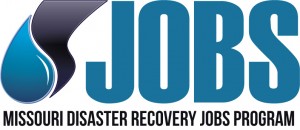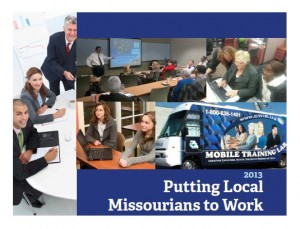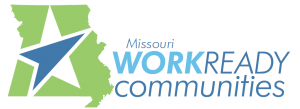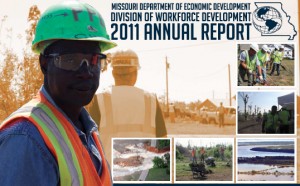 A four-color, 24-page report is now available online describing the critical role of Missouri’s Disaster Recovery Jobs Program (MoDRJP) in putting workers displaced by tornadoes and floods back to work and speeding local recovery efforts. MoDRJP arose through a collaboration organized by the Division of Workforce Development (DWD) including the Missouri National Guard (MONG); city, county, and non-profit agencies; nine Local Workforce Investment Boards (LWIBs); the U.S. Department of Labor; local businesses; and educational institutions.
A four-color, 24-page report is now available online describing the critical role of Missouri’s Disaster Recovery Jobs Program (MoDRJP) in putting workers displaced by tornadoes and floods back to work and speeding local recovery efforts. MoDRJP arose through a collaboration organized by the Division of Workforce Development (DWD) including the Missouri National Guard (MONG); city, county, and non-profit agencies; nine Local Workforce Investment Boards (LWIBs); the U.S. Department of Labor; local businesses; and educational institutions.
The benefits of MoDRJP went far beyond employment. In repairing more than 1,500 miles of gravel roads and levees, removing hundreds of tons of debris, restoring parks, coordinating volunteers and managing donations, many lives and local economies were profoundly altered. A companion 35-minute video on DWD’s YouTube channel provides an overview of MoDRJP, including interviews with key players and work-site participants.


 The interview opens with an overview on the current landscape of workforce programs and how the workforce system responded to economic challenges nationally. Weigensberg shared her approach in the scope of working with the greater Chicagoland workforce programs, specifically the CWICstats, Chicagoland Workforce Information Collaborative.
The interview opens with an overview on the current landscape of workforce programs and how the workforce system responded to economic challenges nationally. Weigensberg shared her approach in the scope of working with the greater Chicagoland workforce programs, specifically the CWICstats, Chicagoland Workforce Information Collaborative. The American Council on Education (ACE) has recommended that postsecondary educational institutions award college credit in applied critical thinking to individuals who earn the ACT National Career Readiness Certificate (NCRC™). ACE recommends that three credit hours be awarded to recipients who earn specific levels of the credential.
The American Council on Education (ACE) has recommended that postsecondary educational institutions award college credit in applied critical thinking to individuals who earn the ACT National Career Readiness Certificate (NCRC™). ACE recommends that three credit hours be awarded to recipients who earn specific levels of the credential. 

